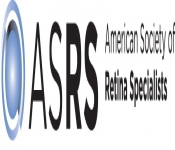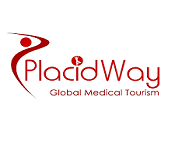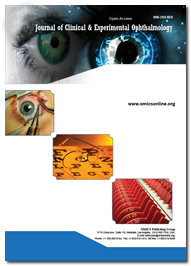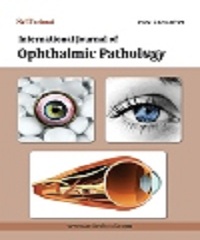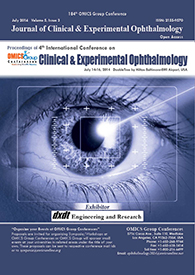Theme: Advancement in the Ophthalmology Treatment
Euro Optometry 2021
About:
The 6th International Conference & Expo on Euro Optometry and Vision Science going to be held during March 24-25, 2021 on Webinars Meeting which brings together a unique and international mix of large and medium pharmaceutical, biotech and diagnostic companies, leading universities and clinical research institutions making the conference a perfect platform to share experience, foster collaborations across industry and academia, and evaluate emerging technologies across the globe. Ophthalmology Congress maximizes the opportunity to interact with and learn from your peers from across the country and across the globe it held with the discussions on Cornea and External Eye Disease, Retina and Retinal Disorders, Neuro-Ophthalmology, Glaucoma: Visual Field Loss, Ocular Microbiology and Immunology, Novel Approaches to Ophthalmology Therapeutics and many more.
Meet significant Ophthalmologists, Optometrists Researchers Clinicians from London. Rome, Japan ,Germany, Switzerland, Ireland, Russia, Singapore, Dubai, Saudi Arabia, China, Turkey, Spain, Taiwan ,Chicago, Korea, India , Australia and many more countries.
Conference Series llc LTD Organizes 300+ conferences, 500+ workshops and 200+ symposiums on Clinical, Medicine, Pharma and Science & Technology every year across USA, Europe, Asia, Middle East, Australia and UK with support from 1000 more scientific societies and Publishes 500 open access journals which contains over 30000 eminent personalities, reputed scientists as editorial board members.
Retinal disorders, optic atrophy, and lesions of the higher visual pathways are the main anatomical causes of visual loss in children. WHO reports that, 285 million people are estimated to be visually impaired worldwide: 39 million are blind and 246 have low vision. About 90% of the world’s visually impaired live in low-income settings 82% of people living with blindness are aged 50 and above. Globally, uncorrected refractive errors are the main cause of moderate and severe visual impairment; cataracts remain the leading cause of blindness in middle- and low-income countries. Many European associations are involved in Ophthalmology and many eye banks are actively promoting the donation of eyes in Europe, addressing a gap in the ophthalmic market, the global ophthalmic market was valued at $10.3 billion in 2010 and is estimated to reach $13.2 billion in 2017.
Objective:
Our aim is to provide cataract surgeons, refractive surgeons, optometrists , opticians, young researchers, students, industrial delegates and anyone professionally involved in study of cataract and refractive surgery with an opportunity to learn about the complexity of the disease, discuss interventional procedures, look at new and advanced cataract removal practices and their efficiency and efficacy in the treatment of various refractive errors and cataract extraction, and understand local realities and practical constraints in improving vision-care.
About Organizers
Conference has an enhanced and highlighted features of scientific partnerships and alliances with development agencies, Institutes, leading research organizations, non-government organizations, and other entities to promote the development-oriented research across the globe through live streaming, B2B and Scientific Meetings. Medical Conferences provides an excellent opportunity for the budding scientists and young researchers through its special initiatives like Young Researcher Forum, Poster Presentation and E-poster .
Target Audience
Ophthalmologists, Optometrists, Opticians, Doctors, Researchers, Students, Industrial Delegates from Academia and Research along with the industrial professionals from biomedical companies and healthcare sectors.
·Clinical researchers & Scientists
.Medical Practitioners, Professors, Deans, Students & Technicians
.Medical & Health care Organizations & Associations
.Idiopathic Intracranial Hypertension – Ocular Migra
Diagnostic Instruments in Optometry
Track 1: Pediatric Ophthalmology
Pediatric ophthalmologists focus on the development of the visual system and the various diseases that disrupt visual development in children. Pediatric ophthalmologists also have expertise in managing the various ocular diseases that affect children. Pediatric ophthalmologists are qualified to perform complex eye surgery as well as to manage children's eye problems using glasses and medications. Many ophthalmologists and other physicians refer pediatric patients to a pediatric ophthalmologist for examination and management of ocular problems due to children's unique needs. In addition to children with obvious vision problems, children with head turns, head tilts, squinting of the eyes, or preferred head postures (torticollis) are typically referred to a Pediatric ophthalmologist for evaluation. Pediatric ophthalmologists typically also manage adults with eye movement disorders (such as nystagmus or strabismus) due to their familiarity with strabismus conditions.
- Pediatric Cataract
- Pediatric Glaucoma
- Pediatric Optometry ResearchSquint
- Retinopathy of Prematurity
- Pediatric Vision Care
- Childhood Malignancies
- Congenital Cataract
- Congenital Glaucoma
Related Societies:
USA: Pan American Society of Ophthalmic Pathologists, Argentinian Society of Ophthalmology , Laos Society of Ophthalmology , Mexican Society of Ophthalmology, Retina International
Europe: Israel Society for Vision and Eye Research, Italian Society of Ophthalmology, Netherlands Ophthalmological Society, Turkish Ophthalmological Society
Asia Pacific: ASEAN Ophthalmological Society, Ophthalmological Society of Taiwan, Optometrists Association Australia, The Hong Kong Association of Private Practice Optometrists
Track 2: Neuro Ophthalmology
Neuro-ophthalmology is the consolidation of neurology and ophthalmology, frequently managing complex systemic sicknesses that have signs in the visual framework. Cerebral Visual Impairment (CVI) incorporates every single visual brokenness created by harm to, or breaking down of, the retrochiasmatic visual pathways without harm to the foremost visual pathways or any significant visual ailment. Vision problems can be described as the decreased ability to view things. There are many varieties of eye problems and vision disturbances, myopia, halos, blurred vision etc. The impaired vision or vision problems will reduce the sharpness of images. It usually hampers the daily activities of a person. Myasthenia gravis is brought about by a breakdown in the typical correspondence in the middle of nerves and muscles which prompts two fold vision, hanging eyelids and different muscles shortcoming which affecting the both i.e. neuromuscular action furthermore vision. Demonstrative instruments in Neuro-ophthalmology are utilized to explore and to treat the different state of Neuro-ophthalmology as Neonatal visual examination are basically performed to screen the vicinity and movement of Retinopathy of Prematurity. College of Pennsylvania is presently taking a shot at Neuro-ophthalmology venture. Treatment of Neuro Ophthalmology will rely upon one's analysis and furthermore contain medicinal treatments, botulinum poison infusions to stop muscle fit for disarranges, for example, hemifacial fit, laser surgery for various vision issue and surgical medications, as for eye muscle surgery to reestablish straight eye arrangement.
- Papilledema
- Optic Neuritis
- Optic Nerve Disorders
-
Optic Neuropathy
Related Societies:
USA: World Glaucoma Association, The Foundation Fighting Blindness Canada, Ophthalmological Society of South America, Latin American Glaucoma Society
Europe: International Strabismological Association , World Glaucoma Association, International Ocular Inflammation Society, International Society for Low Vision Research and Rehabilitation
Asia Pacific: The Hong Kong Optometric Association, Indian Optometric Association, Indonesian Optometrists Association, Japan Optometric Association
Track 3: Refractive:
This mistakes are only one potential reason for obscured vision, so it is critical for your kid to have an examination immediately in the event that they are encountering side effects.
The most well-known refractive mistakes in youngsters are:
Myopia (otherwise called nearsightedness)
Hyperopia (additionally called farsightedness)
Astigmatism (contorted vision)
It is conceivable to have at least two kinds of refractive mistake in the meantime.
Nearsightedness: A nearsighted eye is longer than ordinary or has a cornea that is excessively steep, with the goal that the light beams center before the retina. Close protests look clear, however removed items seem obscured.
Hyperopia: A hyperopic eye is shorter than typical. Light from close protests can't center obviously around the retina. The words on a page will appear to be hazy, or it will be hard to see all around ok to do quit for the day, such as threading a needle.
Astigmatism: Astigmatism contorts or obscures vision for both close and far items. It's relatively similar to investigating a fun house reflect in which you show up excessively tall, too wide or too thin. When you have astigmatism, the cornea (the unmistakable front window of the eye) bends more in one heading than in the other a football. A typical cornea is round and smooth, similar to a ball. It is conceivable to have astigmatism in blend with nearsightedness or hyperopia.
Conjunctivitis
Styes
Genetic cornea disease
Refractive Errors in Children
- Entropion
- Corneal Ulcer
- Corneal Dystrophy
- Glaucoma
Track 4: Retina & its Disorders
The Retina is a slight layer of tissue within back mass of your eye. It contains a large number of light-delicate cells and other nerve cells that get and compose visual data. Your retina sends this data to your cerebrum through your optic nerve, empowering you to see. Retinal degenerative issue, for example, Age-related macular degeneration and near sighted macular degeneration influencing youthful and old from numerous societies, races and ethnicities. Clinical Ophthalmology indicates the duties of practitioner in an eye clinic and it also covers the broad spectrum of research from beside to bench side and plays a crucial in screening, diagnosis and therapeutics to treat eye illness. The focal zone of the retina contains a high thickness of shading delicate photoreceptor cells called cones which are in charge of shading vision and thus any deformity and modification in the focal territory of the retina will prompt Colour vision imperfections. Then again ailments like Diabetic retinopathy and Retinal tumors and other specific Eye Disease can likewise be in charge of the lasting vision misfortune in the event that it is not treated on time. Generally, retinal malady has had a low need in avoidance of visual deficiency programs in creating nations. Age-related macular degeneration (AMD) is a retinal degenerative sickness that causes a propelled loss of focal vision. Some retinal sicknesses are innate, static hemeralopia and diffuse yellow or dim hue of the fundus. Following 2 or 3 hours in all out murkiness, the typical shade of the fundus returns.
- Diabetic retinopathy
- Retinal Tumors
- Retinal Detachment
- Retinopathy of Prematurity Ophthalmologic Approach
- Retina and Retinal Surgery
Related Societies:
USA: American Society of Retina Specialists, Retinal American Academy of Ophthalmology , Optometric Retina Society, Pan America Glaucoma Society, American Glaucoma Society
Europe: European Society of retina Specialists, European Vitroretinal Society, European Glaucoma Society, European Society of cataract and refractive surgeons, European Mucosal Immunology Group
Asia Pacific: Japanese society of Cataract and refractive Surgeons, Asia Pacific Vitro retinal Societies , Asia Cornea Society, Afro-Asian Council of Ophthalmology , Asian Angle-Closure Glaucoma Club
Track 5: Strabismus
Disorder in which the eyes don't look in exactly the same direction at the same time is known as Strabismus. Causes of strabismus can include nerve injury or dysfunction of the muscles controlling the eye. The main symptom is eyes that don't look in exactly the same direction at the same time. Crossed eyes can usually be corrected with early treatment. Several treatment options exist to align the eyes. They include special eye wear, use of an eye patch and rarely surgery.
Types
- Hypertropia is once the eye turns upwards
- Hypotropia is once the eye turns downwardly
- Esotropia is once the eye turns inwards
- Exotropia is once the eye turns outward.
- Hypertropia is once the eye turns upwards
- Hypotropia is once the eye turns downwardly
- Esotropia is once the eye turns inwards
- Exotropia is once the eye turns outward.
Related Societies:
USA: International Strabismological Association, Joint Commission on Allied Health Personnel in Ophthalmology, Puerta Rican Society of Ophthalmology, Canadian Ophthalmic Pathology Society
Europe: Czech Ophthalmological Society, Danish Ophthalmological society, Finnish Ophthalmological Society, International Ocular Inflammation Society
Asia Pacific: Indonesian Pediatric Ophthalmology and Strabismus Society, Myanmar Ophthalmological Society, Pediatric Ophthalmology Subdivision, Pediatric Keratoplasty Association
Track 6: Cornea Disorders and Treatments
The Eye disease that could end up with permanent blindness. Hence investigation of corneal disease is carry out to mitigate the disease and methods like Contact lenses & vision correction is also use to cure the vision related problems and surgical procedure like corneal transplantation is used to transplant the cornea. The cornea and focal point of the eye are worked to concentrate light on the retina, which is the light-touchy tissue at the back of the eye. At the point when light strikes the cornea, it twists or refracts the light approaching onto the focal point. The focal point refocuses that light onto the retina, which begins the interpretation of light into vision. The retina changes over light into electrical driving forces that go through the optic nerve to the mind, which translates them as pictures.
- Focus on Dry Eye and Blepharitis
- Corneal neovascularization
- Epithelial keratitis & drug-induced epithelial keratitis
- Recurrent corneal erosion
- Corneal degeneration
Related Societies:
USA: North American Neuro Ophthalmology Society, Latin American Association of Optometry and Optics , Pan American Association of Ophthalmology
Europe: European Association for the Study of Diabetic Eye Complications, European Association for Vision and Eye Research, European Retina, Macula and Vitreous Society , South-East European Ophthalmological Society
Asia Pacific: Asia Pacific Council of Optometry , Asia-Pacific Glaucoma Society, Asia Pacific Academy of Ophthalmology, Asia-Pacific Academy of Ophthalmology, Australian Society of Ophthalmologists
Track 7: Uveitis
Uveitis could be a form of inflammation to the center layer of the attention (uvea), structure typically contains the iris, membrane and choroid coat. The causes of uveitis area unit of various varieties starting from a straightforward microorganism Infection to severe eye injury, studies show that the presence of inflammatory disease, AIDS, skin condition will increase the probabilities of uveitis. During this the inner a part of the attention turns to red in color, thanks to this pain, blurred vision and picture sensitivity happens. Prompt use of anti-bacterial will treat the condition otherwise their area unit high probabilities that it should cause eye disease, cataract etc...
- Anterior Uveitis
- Intermediate Uveitis
- Posterior Uveitis
- Ocular and systemic side effects of drugs
- IVT injection-sparing approaches
- Transplantation technologies for retina
- Oral and topical nonsteroidal anti-inflammatory agents (NSAIDs)
Related Societies:
USA: American College of Veterinary Ophthalmologists, New England Ophthalmological Society, American Academy of Optometry, American Ophthalmological Society, American Society of Ophthalmic Administrators
Europe: European Society of Ophthalmology, South-East European Ophthalmological Society , European Contact Lens Society of Ophthalmologists , European Glaucoma Society
Asia Pacific: Asia Pacific Association of Cataract Refractive Surgeons , Australian Society of Ophthalmologists, All India Ophthalmological Society
Track 7: Glaucoma
We have prescient utilize that could help and direct more particular treatment in some glaucoma patients. Endothelia in glaucoma treatment assume an exceptionally enter part in pathogenesis of glaucoma. Regarding Social Security advantages, lost wage charge incomes, and medicinal services consumptions, the expense to the U.S. government is assessed to be over $1.5 billion every year. The Glaucoma Research Society of Canada is the main Canadian non-benefit association exclusively committed to financing glaucoma research. Following 1989, it has raised more than two million dollars in backing of 150 examination ventures. The Society reserves 10 to 15% of all autonomous glaucoma research in Canada. Bascom Palmer and Wills Eye are the top scientist association for glaucoma.
- Open angle and closed angle glaucoma
- Biomarkers for Glaucoma
- Gonioscopy procedure
- Impaired ocular blood flow regulation in open angle glaucoma
- Impaired ocular blood flow regulation in open angle glaucoma
- How to use Resources to Prevent Glaucoma Related Visual Impairment and Blindness
- IOP Lowering Molecules: New Ways and Old Problems (Intraocular Pressure)
- IOP Lowering Molecules: New Ways and Old Problems (Intraocular Pressure)
Related Societies:
USA: North American Neuro Ophthalmology Society, Latin American Association of Optometry and Optics , Pan American Association of Ophthalmology
Europe: European Society of Ophthalmology, European Eye Bank Association , Association of European Ocularists , European Strabismological Association
Asia Pacific: Afro-Asian Council of Ophthalmology , Asian Angle-Closure Glaucoma Club , Academy of Asia-Pacific Professors of Ophthalmology , Asian Oceanic Glaucoma Society
Track 9: Ophthalmology Surgery
There is an assortment of conditions that might call for eye surgery; from corrective changes to vision-sparing strategies by surgeons. Surgery is the clinical ophthalmic research involving eye disorders, vision, medical, surgical and optical care. Every treatment accompanies its own advantages, dangers, and signs for use. From restorative medications to orbital inserts, today's headways can handle any condition and give an effective arrangement.
- Orbital decompression surgery
- Tear duct surgery
- Refractive surgery
- Vision Correction Surgery
- Retinal Replacement Surgery
- Cataract Surgery
- Plastic Surgery
- Glaucoma Surgery
Related Societies:
USA: American Association of Eye and Ear Hospitals, American Optometric Association , Canadian Association of Optometrists , Ohio Optometric Association
Europe: European Society of Veterinary Ophthalmology, European Council of Optometry and Optics, European Paediatric Ophthalmology Society, European Society of Cataract and Refractive Surgeons
Asia Pacific: Asian Neuro-ophthalmology Society, Asian Angle Closure Glaucoma Club, Asia Pediatric Ophthalmologists Association , Asia Pacific Society of Ophthalmic Plastic and Reconstructive Surgery.
Track 10: Optometry and Vision Science
Optometry and Vision Science is a healthcare profession which involves examining the eyes and applicable visual systems for defects or abnormalities as well as the medical diagnosis and management of eye disease. Traditionally, the field of optometry began with the primary focus of correcting refractive error through the use of spectacles. Vision science is an interdisciplinary study of visual systems and perception and incorporates many disciplines, including optometry, ophthalmology, molecular genetics, neuroscience and physiological optics.
- Optic and Radiations
- Optical Power of the Eye
- Stereopsis: 3D Vision
- Biophysics of vision
- Contact Lens
- Spectacle Lens
- Optical Power of the Eye
- Optic and Radiations
Related Societies:
USA: World Council of Optometry, International Society for Eye Research, American Society of Ocular Trauma, International Society for Genetic Eye Diseases and Retinoblastoma
Europe: International Strabismological Association , World Glaucoma Association, International Ocular Inflammation Society, International Society for Low Vision Research and Rehabilitation
Asia Pacific: Optometric Association of the Philippines, Nepalese Association of Optometrists, Singapore Optometric Association, Sri Lanka Optometric Association.
Track 11: Macular Degeneration
Macular Degeneration is caused by the deterioration of the central portion of the membrane, the within back layer of the attention that records the pictures we see and sends them via the cranial nerve from the attention to the brain. The retina’s central portion, referred to as the macula, is chargeable for focusing vision within the eye, and it controls our ability to scan, drive a automobile, acknowledge faces or colors, and see objects in fine detail. degeneration is that the causes area unit advanced, however embody each heredity and setting. Dry degeneration is diagnosed once when yellowish spots referred to as drusen begin to accumulate in and round the macula. it's believed these spots area unit deposits or scrap from deteriorating tissue.
Age-related degeneration typically produces a slow, painless loss of vision. In rare cases, however, vision loss are often sharp. Early signs of vision loss from AMD embody shadowy areas in your vision or outstandingly fuzzy or distorted vision. Treatments for degeneration rely upon whether or not the malady is in its early-stage, dry type or within the additional advanced, wet type that may result in serious vision loss. No FDA-approved treatments exist yet for dry macular degeneration, though biological process intervention might facilitate stop its progression to the wet type
- Biochemistry of Vision
- Photochemistry of Vision
- Photochemistry of Vision
- Metabolism of Cornea
- Blepharitis
- Bacterial Conjunctivitis
- Viral Conjunctivitis
- Dendritic Keratitis
- Dendritic Keratitis
- Photochemistry of Vision
Related Societies:
USA: American Society of Retina Specialists, Retinal American Academy of Ophthalmology , Optometric Retina Society, Pan America Glaucoma Society, American Glaucoma Society
Europe: European Society of retina Specialists, European Vitroretinal Society, European Glaucoma Society, European Society of cataract and refractive surgeons, European Mucosal Immunology Group
Asia Pacific: Japanese society of Cataract and refractive Surgeons, Asia Pacific Vitro retinal Societies , Asia Cornea Society, Afro-Asian Council of Ophthalmology , Asian Angle-Closure Glaucoma Club
As ocular oncology is a highly specialized field of ophthalmology, there is active international collaboration between ocular oncologists. Ocular oncology is a multidisciplinary service which includes general oncologists, pediatric oncologists, specialist nurses, clinical scientists and many others. The most common malignancies include uveal and conjunctivitis melanoma, uveal metastasis, intraocular and conjunctiva lymphoma and conjunctiva carcinoma. As well as the management of confirmed malignant tumors, ocular oncologists receive a large number of referrals of patients with suspected malignant tumors. Diagnosis is based on bio microscopy, ultrasonography, angiography, optical coherence tomography, auto fluorescence imaging and biopsy. The most common benign tumors include naevi, chorodal haemangioma. Vasoproliferative tumors and retinal haemangioblastomas. Many of these lesions require treatment and/or long-term surveillance. Eyelid and orbital tumors are more likely to be managed within oculoplastic or orbital specialist services.
- Biochemistry of Vision
- Ocular Fluids
- Ocular Oncology
- Anisocoria
- Astigmatism
- Lagophthalmos
- Black eye
- Amblyopia
- Onchocerciasis
- Loiasis
- Macular Oedema
- Blepharochalasis
- Heterochromia iridis
- Hyphema
- Iridodialysis
Related Societies:
USA: Canadian Ophthalmological Society , Optical Society of America, Latin American Association of Optometry and Optics , American Association of Ophthalmic Oncologists and Pathologists, American Society of Ocular Trauma
Europe: European Society of Cornea & Ocular Surface Disease Specialists , European Union of Medical Section of Ophthalmology, European University Professors in Ophthalmology
Asia Pacific: Hong Kong Ophthalmological Society, Indonesian Ophthalmologists Association , Malaysian Society of Ophthalmology, Singapore Society of Ophthalmology
Track 13: Effect of Digital Screens on Eye
Digital screens give off little or no harmful radiation (such as x-rays or UV rays). All levels of radiation from computer screens are below levels that can cause eye damage such as cataracts. Digital screens do exposure your eyes to blue light
- Tired eyes
- Eyes
Related Societies:
USA: International Strabismological Association, Joint Commission on Allied Health Personnel in Ophthalmology, Canadian Ophthalmic Pathology Society
Europe: Danish Ophthalmological society, Finnish Ophthalmological Society, International Ocular Inflammation Society
Asia Pacific: Myanmar Ophthalmological Society, Pediatric Ophthalmology Subdivision, Pediatric Keratoplasty Association
Track 14: Ophthalmic Lenses and Laser Treatment
Ophthalmic Lens is a lens which corrects the vision in a person where the focal point in the eyes does not hit the retina. They come in a variety of forms including plastic and glass lenses worn in glasses, contact lenses placed in direct contact with the eye, and lens implants surgically inserted into the eye to correct visual impairments. Basic ophthalmic lenses correct for near- or farsightedness, where the focus point lies in front of or behind the retina. They curve to adjust the focal point and let light hit the retina precisely, allowing people to focus. Other lenses can have additional features along with Lasers are essential surgical tools for the 21st-century ophthalmologist. With these devices, surgeons can treat a vision-robbing disease such as glaucoma, macular degeneration and diabetic retinopathy.
- Single-Vision lens
- Bifocal Lens
- Trifocal Lens
- Progressive Lens
- Rigid gas permeable lenses
- Intraocular Lenses Aspheric IOLs
- Accommodating IOLs
- Photocoagulation
- Photovaporization
- Bifocal Lens
Related Societies:
USA: International Strabismological Association, Joint Commission on Allied Health Personnel in Ophthalmology, Canadian Ophthalmic Pathology Society
Europe: Danish Ophthalmological society, Finnish Ophthalmological Society, International Ocular Inflammation Society
Asia Pacific: Myanmar Ophthalmological Society, Pediatric Ophthalmology Subdivision, Pediatric Keratoplasty Association
Track 15: Cataract: Vision Problem
Cataract Ophthalmology Conferences. Waterfall is one of the consistent afflictions in more prepared people.50% of the masses in the United States and Europe have waterfalls and have transformed into the most generally perceived reason of vision incident on the planet. As a rule, the finding of a waterfall is genuinely basic. Be that as it may, in the pre-birth populace, in spite of the fact that analysis is conceivable it is more troublesome. Ultrasounds have demonstrated a compelling strategy to distinguish waterfalls in unborn youngsters. It is basic that they be identified early if present as waterfalls in infants can bring about visual impairment forever if not treated legitimately and rapidly not long after birth. Late examinations demonstrate that the frequency of waterfalls is significantly higher contrasted with that of diabetic retinopathy and Glaucoma. It has turned into the most widely recognized malady in maturing grown-ups and ends up being an unavoidable backup amid seniority.
- Nuclear cataract
- Cortical cataract
- Posterior subcapsular cataract
- Congenital cataracts
Related Societies:
USA: Canadian Ophthalmological Society , Optical Society of America, Latin American Association of Optometry and Optics , American Association of Ophthalmic Oncologists and Pathologists, American Society of Ocular Trauma
Europe: European Society of Cornea & Ocular Surface Disease Specialists , European Union of Medical Section of Ophthalmology, European University Professors in Ophthalmology
Asia Pacific: Hong Kong Ophthalmological Society, Indonesian Ophthalmologists Association , Malaysian Society of Ophthalmology, Singapore Society of Ophthalmology
Track 16: Advanced Ophthalmological Care
Primary and secondary Eye Care include critical awareness, eye examinations, rehabilitation and long-term continuity of care which are carried out through health centres. Eye care is an integral part of ophthalmic sciences. There are several eye care societies and organisations who work to bring these services at door step
- Femtosecond laser-assisted cataract surgery
- Transplantation technologies for retina
- Corneal reshaping & transplantation
- Drugs used in the treatment of allergic conjunctivitis
- Diagnostic dye solutions
- ECP patient Marketing
- Value Chain Concept
- Innovations in Optometric Appliances
- Light-adjustable IOLs
- Choroidal imaging
Related Societies:
USA: International Strabismological Association, Joint Commission on Allied Health Personnel in Ophthalmology, Canadian Ophthalmic Pathology Society
Europe: Danish Ophthalmological society, Finnish Ophthalmological Society, International Ocular Inflammation Society
Asia Pacific: Myanmar Ophthalmological Society, Pediatric Ophthalmology Subdivision, Pediatric Keratoplasty Association
Track 17: Latest and Innovative Eye Research
Eye surgery, generally called visual surgery, can't avoid being surgery performed on the eye or its adnexa, typically by an ophthalmologist. The eye is a sensitive organ, and requires astounding thought some time as of late, in the midst of, and after a surgical procedure. An authority eye master is responsible for choosing the fitting surgical framework for the patient, and for taking the imperative security wellbeing measures. Ophthalmic surgeries can be of different sorts who incorporate Laser eye surgery, waterfall surgery, glaucoma surgery, refractive surgery, corneal surgery, vitreo-retinal surgery et cetera.
Since the eye is strongly connected with nerves, anesthesia is vital. Neighborhood anesthesia is most frequently used. Topical anesthesia using lidocaine topical gel are routinely used for rapid techniques. Since topical anesthesia requires interest from the patient, general anesthesia is every now and again used for youths, horrendous eye wounds, and major orbitotomies for dubious patients. The specialist controlling anesthesia screens the patient's cardiovascular status. Clean security measures are taken to set up the domain for surgery and lower the peril of sullying. These security measures join the use of cleaning operators, for instance, povidone-iodine, and sterile window hangings, outfits and gloves.
- Video Keratoscopy
- Spectral-domain Optical Coherence Tomography
- OCT Angiography
- Small Gauge Endoscopy
- Optical Coherence Tomography (OCT) Imaging Systems
- Femtosecond laser-assisted cataract surgery
- Femtosecond laser-assisted cataract surgery
- Transplantation technologies for retina
- Corneal reshaping & transplantation
- Drugs used in the treatment of allergic conjunctivitis
- Diagnostic dye solutions
- ECP patient Marketing
- Value Chain Concept
- Innovations in Optometric Appliances
- Light-adjustable IOLs
- Choroidal imaging
Track 18: Ophthalmic Disorders
This is an accumulation of contextual analyses to offer you some assistance with getting an understanding on the common history and starting examination of different ophthalmic issue. Ophthalmic Research mainly focuses on medical and surgical techniques and treatments involved in the management of eye diseases. The discourse, albeit brief, is expected to give you a basic diagram of every illness. Myopia is a condition of eye where the light that comes in doesn't directly concentrate on the retina however ahead of it, inflicting the image that one sees once viewing a far off object to be out of focus, however focused once viewing at a closer object.
- Anatomy
- Refractive Errors
- Age-Related Macular Degeneration
- Cataract
- Diabetic Retinopathy
- Amblyopia
- Strabismus
- Night Blindness
- Red Eyes
- Eyestrain
- Lazy Eye
- Uveitis
- Colorblindness
- Floaters
- Dry Eyes
- Conjunctivitis (Pinkeye)
Related Societies:
USA: International Strabismological Association, Joint Commission on Allied Health Personnel in Ophthalmology, Canadian Ophthalmic Pathology Society
Europe: Danish Ophthalmological society, Finnish Ophthalmological Society, International Ocular Inflammation Society
Asia Pacific: Myanmar Ophthalmological Society, Pediatric Ophthalmology Subdivision, Pediatric Keratoplasty Association
Market Analysis Report of 2nd conference:
6th International Conference & Expo on Euro Optometry and Vision Science, Webinars, March 24-25 | 2021
Euro-Optometry 2021: According to a study it is estimated that around 48% of world population is blind because of cataract and more than 60 million people suffer from glaucoma and it is estimated that the number would rise to 80 million by the end of 2020. Ageing population is the leading cause for refractive error problem in countries like the USA and Europe, it is noticed that the refractive error problem is mostly seen in population ageing more than 40 years.
After a huge downfall of the market during economic drain in 2008-2009, ophthalmology market is catching up to get back to the normal as there is a rapid growth in population resulting in increased number of patients with eye diseases and the incidence of cataract and glaucoma are increasing every year.
Importance and scope:
The field of Ophthalmology: Ocular treatment & care is growing rapidly and its development is making tremendous impacts in medical and health sciences and pharmaceuticals. The importance and significance can be gauged by the fact that it has made huge advancements over the course of time and is continuing to influence various sectors. Euro Optometry 2021 conference will concentrate on latest and exciting innovations in areas of eye surgeries, diagnostics and recent technologies towards eye care. It will also provide an excellent opportunity to meet the leading eye surgeons, top class eye care specialists, ophthalmologists, optometrists, research scientists and the young student research community working the related field.
Euro Optometry 2021 Conference is designed to comprise of Keynote sessions, Workshops and focused symposium on latest developments in the field of one of the sense organ Eye health. The three-day Ophthalmology -2020 conference includes major sessions on detailed overview on Retinal diseases and disorders, Research Trends in Surgical and Medical Ophthalmology, Novel Approaches to Ophthalmology Therapeutics, Ocular-Pathology, Optometry and vision science. Euro Optometry 2021 also acts as a platform to exchange information, new interventions and strengthen the collaboration among Ophthalmologists, Optometrists, Researchers, Associate Professors, and Scholars from both academia and ophthalmic Institutes.
SIFI
SIFI is the leading Italian ophthalmic company, focused on eye care since 1935. SIFI designs, manufactures and markets innovative pharmaceutical specialty products, surgical and medical devices. Headquartered in Catania, Sicily, SIFI operates directly in Italy, Romania and Mexico with a staff of more than 350 people worldwide. Since June 2015, SIFI is backed by 21 Investimenti, a private equity firm founded by Alessandro Benetton, which supports the company’s international expansion and portfolio development strategy.
Fund Allotment to Ophthalmology Treatments and Research: The Ophthalmology Department at Upstate Medical University has received a $110,000 unrestricted grant from Research to Prevent Blindness (RPB), bringing the department’s total amount of RPB funding to more than $2.6 million since 1998. In addition to RPB funding, Upstage’s Ophthalmology Department has attracted more than $22.7 million in peer-reviewed funding from the National Institutes of Health, National Science Foundation and other agencies and lists among its funding sources $1.2 million from the Grateful Patient campaign of the Upstate Medical University Foundation and $250,000 from the Lions Clubs of District
The NEI is operating under a continuing resolution (H. R. 2775/Public Law 113-46), which provides $195M to fund operations. See http://grants.nih.gov/grants/guide/notice-files/NOT-OD-14-012.html. $10M is allocated to Research Management Support, $24M to the Intramural Research Program, and $161M to Extramural Research.
Global ophthalmology drug and devices market is witnessing a significant growth these days due to the increasing incidence and prevalence of eye related disorders such as macular degeneration, presbyopia, and diabetic retinopathy among the todays aging population. With the introduction of ophthalmic devices equipped with sophisticated technologies, people are increasingly opting for ophthalmic surgeries to correct their eye related disorders for having a healthy life. The global ophthalmology market witnessed a dip during the economic downturn in 2008 and 2009; however, it is poised to grow at a stable rate mainly due to an increasing aging population, large group of patients with eye diseases, changing demographics and geographical trends, and increased focus on combination therapies of drugs. Moreover, incidences of retinal disease, glaucoma and cataract are increasing every year.
Lack of health insurance amongst population especially within the developing countries or lack of insurance covering all types of IOLs or contact lens in developed countries is a significant challenge faced by the ophthalmology industry. The other challenges include low awareness about the ophthalmic disorders, especially in developing countries. This is primarily due to the lack of awareness amongst rural population about the various ophthalmic disorders. The ophthalmology drugs and devices market is divided into four major segments are surgical devices, diagnostic and monitoring devices, vision care, and drugs. Drugs market is classified into existing treatment drugs and drugs in pipeline and the vision care market is segmented into spectacles and contact lenses. The total market is forecasted till 2017. This market is also considered by formulation types such as capsules, gels, eye drops, ointment, and eye solutions.
Advancements in ophthalmic technologies, high prevalence rates of refractive error, cataract, and glaucoma, increasing demand for the diagnostic procedures and low compliance with pharmaceuticals will propel this devices market. The Global Ophthalmology Drug and Devices Market is expected to reach a market size of $36 billion by the year 2014, at a CAGR of 5.4% from 2009-2014. The drugs market is expected to reach a size of $19.8 billion by the year 2014 growing at a CAGR of 4% from 2009-2014. Europe is the second largest market for ophthalmology drugs and devices, followed by Asia.
Conference Highlights
- Optometry and Vision Science
- Effect of Digital Screens on Eye
- Ophthalmic Lenses and Laser Treatment
- Advanced Ophthalmological Care
- Latest and Innovative Eye Research
- Ophthalmic Disorders
- Pediatric Ophthalmology
- Neuro-ophthalmology
- Refractive Surgery
- Retina & its Disorders
- Cornea Disorders and Treatments
- Glaucoma
- Ophthalmology Surgery
- Macular Degeneration
- Ocular Diseases
- Cataract: Vision Problem
- Strabismus
- Uveitis
- Ophthalmology
- Eye Infection
To share your views and research, please click here to register for the Conference.
To Collaborate Scientific Professionals around the World
| Conference Date | March 24-25, 2021 | ||
| Sponsors & Exhibitors |
|
||
| Speaker Opportunity Closed | |||
| Poster Opportunity Closed | Click Here to View | ||
Useful Links
Special Issues
All accepted abstracts will be published in respective Our International Journals.
- Journal of Clinical & Experimental Ophthalmology
- Journal of Eye & Cataract Surgery
- International Journal of Ophthalmic Pathology
Abstracts will be provided with Digital Object Identifier by






































